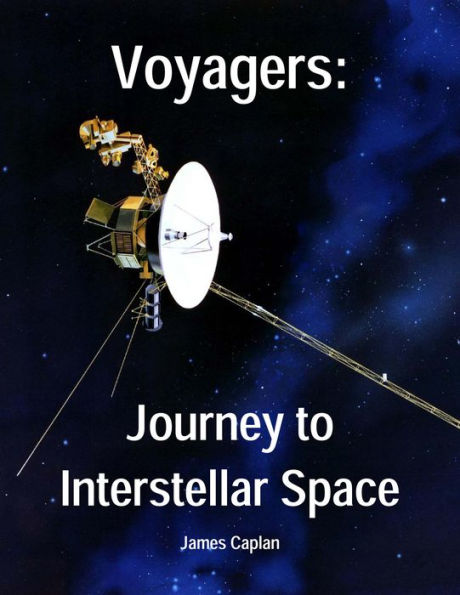More than 30 years after they left Earth, NASA's twin Voyager probes are now at the edge of the solar system. Not only that, they're still working. And with each passing day they are beaming back a message that, to scientists, is both unsettling and thrilling. The message is, "Expect the unexpected."
"It's uncanny," says Ed Stone of the California Institute of Technology in Pasadena, Voyager Project Scientist since 1972. "Voyager 1 and 2 have a knack for making discoveries."
This book is a reflection on what the Voyager mission has accomplished--and a preview what lies ahead as the probes enter the realm of interstellar space in our Milky Way galaxy.
The adventure began in the late 1970s when the probes took advantage of a rare alignment of outer planets for an unprecedented Grand Tour. Voyager 1 visited Jupiter and Saturn, while Voyager 2 flew past Jupiter, Saturn, Uranus and Neptune. Voyager 2 is still the only probe to visit Uranus and Neptune.
Voyager’s list of accomplishments includes the discovery of volcanoes on Jupiter's moon Io; evidence for an ocean beneath the icy surface of Europa; hints of methane rain on Saturn's moon Titan; the crazily-tipped magnetic poles of Uranus and Neptune; icy geysers on Neptune's moon Triton; planetary winds that blow faster and faster with increasing distance from the sun.
Each of these discoveries changed the way we thought of other worlds.
In 1980, Voyager 1 used the gravity of Saturn to fling itself slingshot-style out of the plane of the solar system. In 1989, Voyager 2 got a similar assist from Neptune. Both probes set sail into the void. Sailing into the void sounds like a quiet time, but the discoveries have continued.
There is a bubble surrounding the solar system, researchers call it the "heliosphere," and it is gargantuan. Made of solar plasma and magnetic fields, the heliosphere is about three times wider than the orbit of Pluto. Every planet, asteroid, spacecraft, and life form belonging to our solar system lies inside. The Voyagers are trying to get out, but they're not there yet. The outer layer of the bubble is the heliosheath--and that is where the Voyagers are now."
The heliosheath is a very strange place, filled with a magnetic froth no spacecraft has ever encountered before, echoing with low-frequency radio bursts heard only in the outer reaches of the solar system, so far from home that the sun is a mere pinprick of light. In many ways, the heliosheath is not like our models predicted.
In June 2010, Voyager 1 beamed back a startling number: zero. That's the outward velocity of the solar wind where the probe is now. No one thinks the solar wind has completely stopped; it may have just turned a corner. But which way? Voyager 1 is trying to figure that out through a series of "weather vane" maneuvers, in which the spacecraft turns itself in a different direction to track the local breeze. The old spacecraft still has some moves left, it seems.
No one knows exactly how many more miles the Voyagers must travel before they "pop free" into interstellar space. Most researchers believe, however, that the end is near and they will break through within five years or so.
There is plenty of power for the rest of the journey. Both Voyagers are energized by the radioactive decay of a Plutonium 238 heat source. This should keep critical subsystems running through at least 2020.
35 full color photos and illustrations. Contents hyperlinked for easy navigation.



